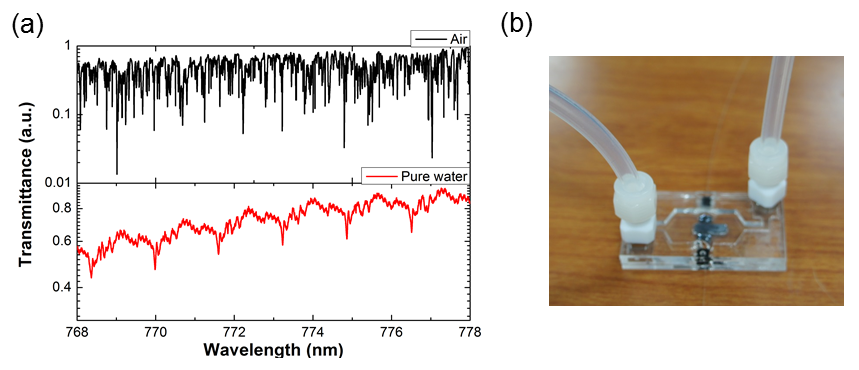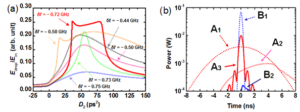Packaging and ultra-sensitive sensing of micro optical resonators with flow paths
Research
Packaging and ultra-sensitive sensing of micro optical resonators with flow paths
Toward the ultimate in high-sensitivity sensing
Whispering-gallery-mode micro optical resonators have a very high Q-value, so they are sensitive to small changes in the environment around the resonator. Even a slight change in the complex permittivity allows light to interact for a long time, so that absorption (Q-value) or refractive index changes (resonance wavelength) can be captured. Using this property, ultra-sensitive optical sensors at the molecular level have been demonstrated.
However, previous studies have been conducted under strict laboratory conditions. In order to use the device as a sensor, it is necessary to take the device out of the laboratory, which requires the development of packaging techniques with optical fibers and flow paths. However, the whispering-gallery-mode micro optical resonator requires a nanofiber with a tapered diameter to input and output light via evanescent light, and precise positioning has been indispensable. We packaged nanotapered fibers and micro optical resonators by using a curing agent with a small volume change. We also integrated them with flow paths. This is an example of optofluidics, a research field in which the integration of optical circuits and channels provides novel functions.

Figure 1: (a) Transmission spectra of the resonator in air and in liquid. Sensing is possible by observing the shift of the transmission spectrum. (b) Photograph of a micro optical resonator packaged with optical fibers for flow path and input/output.
As sensing applications of the whispering gallery mode resonator, detection of NaCl ions and pH sensing were demonstrated. Because electrodes are required for conventional pH sensors, there are certain dangers in detecting flammable materials due to the possibility of ignition. We demonstrated all-light pH sensing, which is expected to lead to future applications such as the detection of combustible gases.

Figure 2: Change in resonance wavelength of micro optical resonator when pH is varied.
A part of this research was supported by Grant-in-Aid for Scientific and Technological Research (15H05429, 25600118). A part of this work was supported by the Strategic Information and Communications R&D Promotion Program (SCOPE).
- Categories
- 研究トピックス



